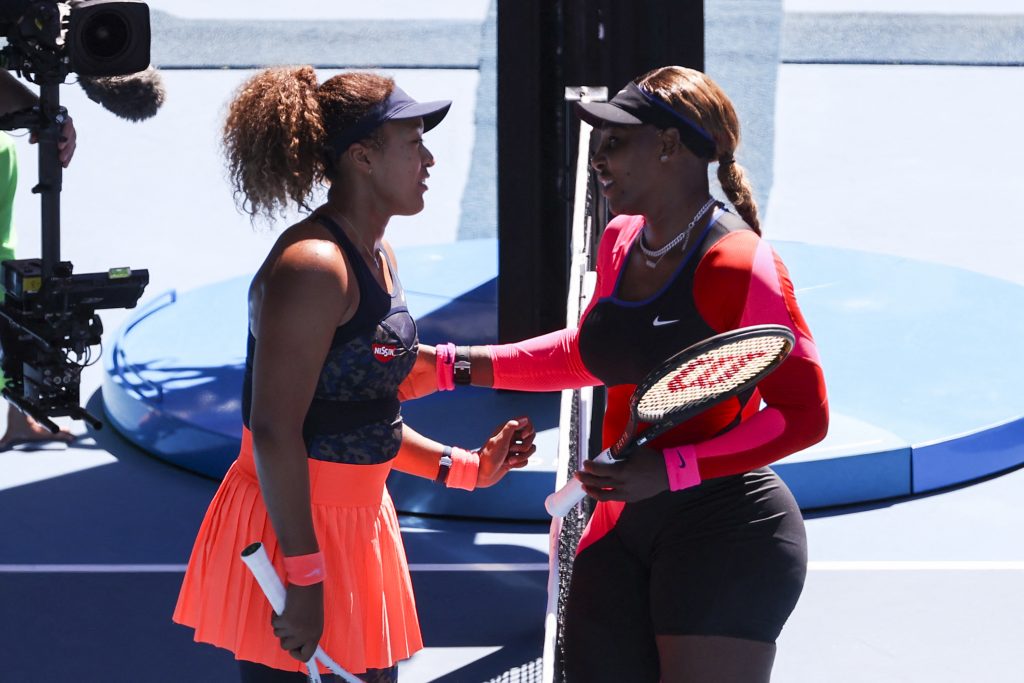
- ARAB NEWS
- 09 Jul 2025

MELBOURNE: As Serena Williams walked off the court after her latest so-close-yet-so-far bid for a 24th Grand Slam title ended with a loss to Naomi Osaka at the Australian Open, the 39-year-old American paused and put her hand on her chest as thousands of spectators rose to applaud.
Was this, Williams was asked at a news conference after the 6-3, 6-4 semifinal defeat, her way of saying goodbye?
“If I ever say farewell,” she replied with a smile, “I wouldn’t tell anyone.”
When the next question returned the conversation to the subject of Williams’ many mistakes Thursday (Wednesday night EST) — twice as many unforced errors, 24, as winners, 12 — she shook her head, teared up, said, “I’m done,” and abruptly ended the session with reporters.
Once again, Williams played well enough to get to the closing days of a major tournament. And once again, he couldn’t quite get the job done in order to add one more Grand Slam trophy to her collection of 23 and equal Margaret Court for the most in tennis history.
Osaka, who also beat Williams in the chaotic 2018 U.S. Open final, reached her fourth major title match and stretched her winning streak to 20 matches by claiming the last eight points.
“I don’t know if there’s any little kids out here today, but I was a little kid watching her play,” Osaka, 23, said about Williams, “and just to be on the court playing against her, for me, is a dream.”
The No. 3-seeded Osaka’s Grand Slam collection also includes last year’s U.S. Open and the 2019 Australian Open and she is, without a doubt, the most dangerous hard-court player in the women’s game at the moment.
That used to be Williams, of course. But she was off-target too much in this contest.
“I could have won. I could have been up 5-Love,” said Williams, who instead took a 2-0 lead at the outset before dropping the next five games. “I just made so many errors.”
Her forehand, in particular, went awry, with no fewer than 10 unforced errors off that side in the first set alone.
“Too many mistakes there,” she said. “Easy mistakes.”
Williams’ frustration was made plain early in the second set, when she leaned over and screamed, “Make a shot! Make a shot!”
After collecting her professional era-record 23rd Slam singles trophy at Melbourne Park while pregnant in 2017, Williams reached four major finals and lost them all.
She’s also now lost in the semifinals twice in that span.
So on Saturday, at 7:30 p.m. local time (3:30 a.m. EST), Osaka will meet a first-time Grand Slam finalist for the championship. No. 22 Jennifer Brady of the United States was scheduled to face No. 25 Karolina Muchova in Thursday’s second semifinal.
“Everyone’s just really excited whenever they play their first final, but they’re also really nervous,” Osaka said, then added with a laugh: “So I don’t want to wish nerves on someone, but hopefully one of them gets nervous.”
One men’s semifinal was scheduled for later Thursday: No. 1 Novak Djokovic vs. Aslan Karatsev, a qualifier from Russia who is ranked 114th and playing in his first Grand Slam tournament.
Djokovic is seeking a ninth Australian Open title and 18th Grand Slam trophy overall.
Rafael Nadal — who lost in the quarterfinals to Stefanos Tsitsipas after blowing a two-set lead — and Roger Federer are tied for the men’s record of 20.
Spectators were back in the stands on Thursday after they were barred from attending the tournament for five days during a local COVID-19 lockdown. About 7,000 people were allowed into the stadium for Williams-Osaka, roughly half of capacity.
Ushers walked through the aisles at changeovers to remind fans they needed to wear a mask or over their nose and mouth.
On the hottest day of the hard-court tournament so far — 85 degrees Fahrenheit (30 Celsius) — Osaka got out to a shaky start, perhaps prodded into pressing in her opening service game by a booming cross-court backhand return winner from Williams on the match’s second point.
That was followed by a double-fault, a wild forehand and, eventually, a netted backhand that handed over a break. Quickly, Williams went up 2-0, then held another break point with a chance to lead 3-0 after another double-fault by Osaka.
“I was just really, like, nervous and scared, I think, at the beginning,” said Osaka, who was born in Japan and moved to the U.S. when she was 3. “And then I sort of eased my way into it.”
Didn’t take long to right herself.
Suddenly, it was Osaka powering in aces, putting groundstrokes right where she wanted, covering the court so well. Williams’ movement has been terrific in Melbourne, but she was flat-footed this time.
Osaka never has tried to hide how much she admires Williams and models her game after the American’s.
Both are predicated on the same basic elements of big serves and quick-strike forehands, and not only did Osaka do both better on this day, she even sounded just like her idol, screaming “Come on!” after several key shots.
There was one last test for Osaka. A trio of double-faults in one game — she wound up with eight for the match — allowed Williams to break for 4-all.
But Oska regained her composure immediately, breaking back at love with the help of a pair of backhand winners and a double-fault from Williams, then holding at love to end it.
AP